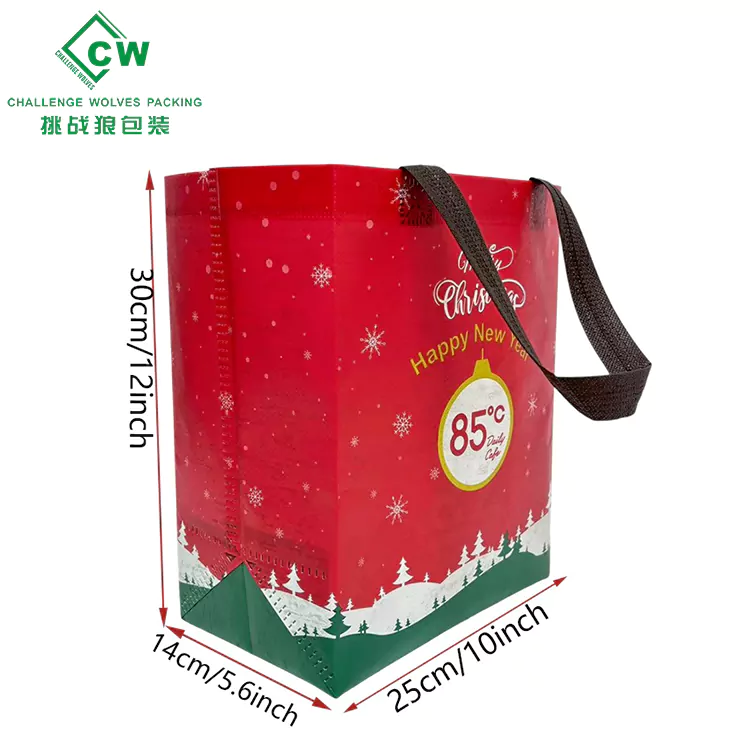How Do Ultrasonic Bags Improve Sealing Strength and Product Protection
2025-11-17
When I first joined Challenge Wolves, our team focused heavily on solving customers’ packaging failures—especially weak seals and product leakage. Over time, I have seen how the Ultrasonic Bag has become one of the most reliable solutions for brands that need stronger seals, higher product protection, and consistent packaging performance. In this blog, I want to share, from my firsthand experience, why ultrasonic sealing technology makes such a difference and how our upgraded specifications help customers reduce waste, complaints, and supply-chain risks.
What Makes Ultrasonic Bags Capable of Delivering Stronger Sealing Performance
From a manufacturing perspective, ultrasonic sealing works by generating high-frequency vibrations that instantly bond materials at a molecular level. This mechanism eliminates the traditional problems caused by heat-based sealing, such as burnt edges, uneven fusion, or weak seams.
Based on real customer feedback, ultrasonic bags offer three major advantages:
Key Strengths
-
No thermal damage even with sensitive films
-
Clean and precise sealing line with zero residue
-
Faster production speed with lower energy consumption
-
Higher sealing consistency, especially for heavy-duty packaging
-
Reduced risk of leakage during shipping or storage
Why Does Ultrasonic Sealing Provide Better Product Protection
After 20 years of handling packaging optimization projects, one key insight remains unchanged: the quality of the seal determines product integrity. Ultrasonic sealing enhances protection in several ways:
-
Prevents moisture penetration
-
Improves oxygen barrier stability
-
Eliminates contamination inside sealing areas
-
Enhances durability for vacuum and high-pressure applications
-
Extends shelf life for food, medical, and industrial items
Many clients who switched from heat-sealed bags to our ultrasonic bags reported up to 35% fewer customer complaints related to broken or open seams.
Which Technical Parameters Define the Performance of Our Ultrasonic Bags
To help customers quickly understand whether our bags match their application, here are the core specifications we provide:
Product Parameter List
-
Bag Material Options: PP, PE, Multi-layer composite
-
Sealing Width Range: 3 mm – 12 mm
-
Ultrasonic Frequency: 15 kHz / 20 kHz / 35 kHz
-
Tensile Strength: 18–28 MPa depending on material
-
Burst Pressure Resistance: Up to 65 N (customizable)
-
Operating Temperature Tolerance: −20°C to 80°C
-
Custom Shapes: Flat bag, gusset bag, stand-up pouch
-
Food-grade & medical-grade available
How Do These Specifications Translate Into Real-World Benefits
Below is a table that summarizes how our parameters help solve common industry pain points:
Performance Comparison Table
| Feature / Parameter | Real-World Benefit | Customer Pain Point Solved |
|---|---|---|
| 12 mm ultrasonic sealing width | Strong, stable fusion | Prevents burst seams during transport |
| 20 kHz sealing frequency | Clean bonding with zero residue | Eliminates seal contamination issues |
| Multi-layer composite film | High barrier & anti-leak capability | Stops oxidation and moisture intrusion |
| 65 N burst resistance | Durability for heavy items | Avoids shipping leaks and product loss |
| −20°C to 80°C tolerance | Suitable for chilled & warm conditions | Extremes won’t weaken seal quality |
These measurable parameters help customers choose the right bag type with confidence and prevent packaging failures before they occur.
How Can You Decide Whether Ultrasonic Bags Are Right for Your Product
If your current packaging often experiences:
-
seam cracking
-
product leakage
-
customer complaints due to poor sealing
-
heat damage during sealing
-
contamination issues
…then ultrasonic bags can significantly improve your production stability.
From my experience working with global clients, most brands see immediate improvements in sealing consistency once they upgrade to ultrasonic solutions.
What Is the Next Step If You Want Better Sealing Strength and Product Protection
If you’re looking for a packaging solution that enhances sealing strength, protects your products, and reduces waste, our team at Challenge Wolves is ready to help.
Feel free to contact us, send an inquiry, or reach out for a customized sample test. We’re here to support your packaging upgrades and help you achieve a more reliable and efficient production line.
